#Exometeorology
Explore tagged Tumblr posts
Text
"Testers wanted! If you've got an eye for doing CitSci, the Cloudspotting on Mars team invites you to focus it on picking out Martian cloud shapes in #NASAData. Your testing and feedback will help prepare this project for launch. Learn more" -- NASA Citizen Science @DoNASAScience
0 notes
Text
Scientists have observed enough exoplanets to glean some intriguing insights about the cosmos. Nature, it turns out, is capable of producing all kinds of worlds. Exoplanets are tinier than Mercury and double the size of Jupiter; ice-cold and scorching hot; rocky, with some kind of surface; and gaseous, with clouds all the way down. There are planets around the star closest to our sun, just 4.2 light-years away, and planets around stars a couple thousand light-years away. Astronomers can confidently say, based on what they’ve found so far, that our Milky Way galaxy must have more planets than stars.
— 5,000 Exoplanets, and Still Just One Earth
0 notes
Text
#Exometeorology

Neptune weather forecast: Intermittent clouds.
This sequence of Hubble Space Telescope images chronicles the shifting of cloud cover on Neptune. This set of observations—spanning nearly three decades—shows that the number of clouds grows following a peak in our sun’s solar cycle, when the Sun’s level of activity rhythmically rises and falls over an 11-year period.
Astronomers think that the increased ultraviolet radiation from the Sun during its peak causes chemical changes high in Neptune’s upper atmosphere and takes a couple of years to form clouds.
Credit: NASA, ESA, I. de Pater (University of California, Berkeley). Image processing: J. DePasquale (STScI).
ALT TEXT: This sequence of Hubble Space Telescope images chronicles the waxing and waning of the amount of cloud cover on Neptune. This display shows Hubble snapshots of the planet taken in the years 1994, 1998, 2000, 2002 (top row, from left to right) and 2006, 2010, 2015, 2020 (bottom row, from left to right). The planet is blue (due to methane absorption of red light in its atmosphere) and the high-altitude, cirrus-like clouds are white. A comparison of Neptune’s cloud cover corresponds to peaks in the 11-year-long repeating solar cycle where the Sun’s level of activity rhythmically rises and falls. Apparently, an increase in solar ultraviolet radiation causes chemical changes that affect Neptune’s amount of cloud cover.
603 notes
·
View notes
Note
I know a total of 30 different scientists in varying fields from Mycology, Exometeorology, Astrophysics, Hedonics, Epistemology, and more. A few quick calculations with the help of my math savvy friend, as well as a number of tests, informed me that scientists are, on average, more likely to be cute and adorable than otherwise. Given the nearly unanimous agreement of leading Paleontologists that skeletons are to be considered "Cute" and "Adorable" as opposed to humans who only have a 10% chance of being even conventionally attractive, I believe its safe to say that Cuteness displays a Homogeneity of Variance across all groups of scientists no matter the sizes of the test groups. Therefore you have a 77.143% chance of being "Cute" and an 89.2% chance of being "Adorable" according to sound scientific principles.
Gaster: WHAT ABOUT “HANDSOME”? I WANT TO BE HANDSOME.
Zewi: “Being cute” is a silly topic to talk about...
Gaster: IS ZEWI CUTE? OR IS HE HANDSOME?
24 notes
·
View notes
Text
so anyway did you know that the study of atmosphere on planets other than earth is called exometeorology
9 notes
·
View notes
Note
Exometeorology honestly sounds like the coolest thing ever wow
Ay! Exometeorology is the study of any atmosphere other than the earth, especially as it pertains to weather and climate in those other places, it can also pertain to weather on the earth when we try to use simulations that can model weather behavior accurately on earth without relying on knowledge of how weather patterns typically behave in that area.
ie, attempts to predict weather based solely on sensory and not at all on prior happening can fall under exometeorology since one of the big points of the subject is the ability to predict weather/climate/atmospheric behavior of all kinds, in places we’ve never been and maybe can’t even see.
IMO it is the literal coolest possible thing I definitely did not get across how cool it is but it is my favorite scientific speciality hands down.
2 notes
·
View notes
Photo
#Exometeorology
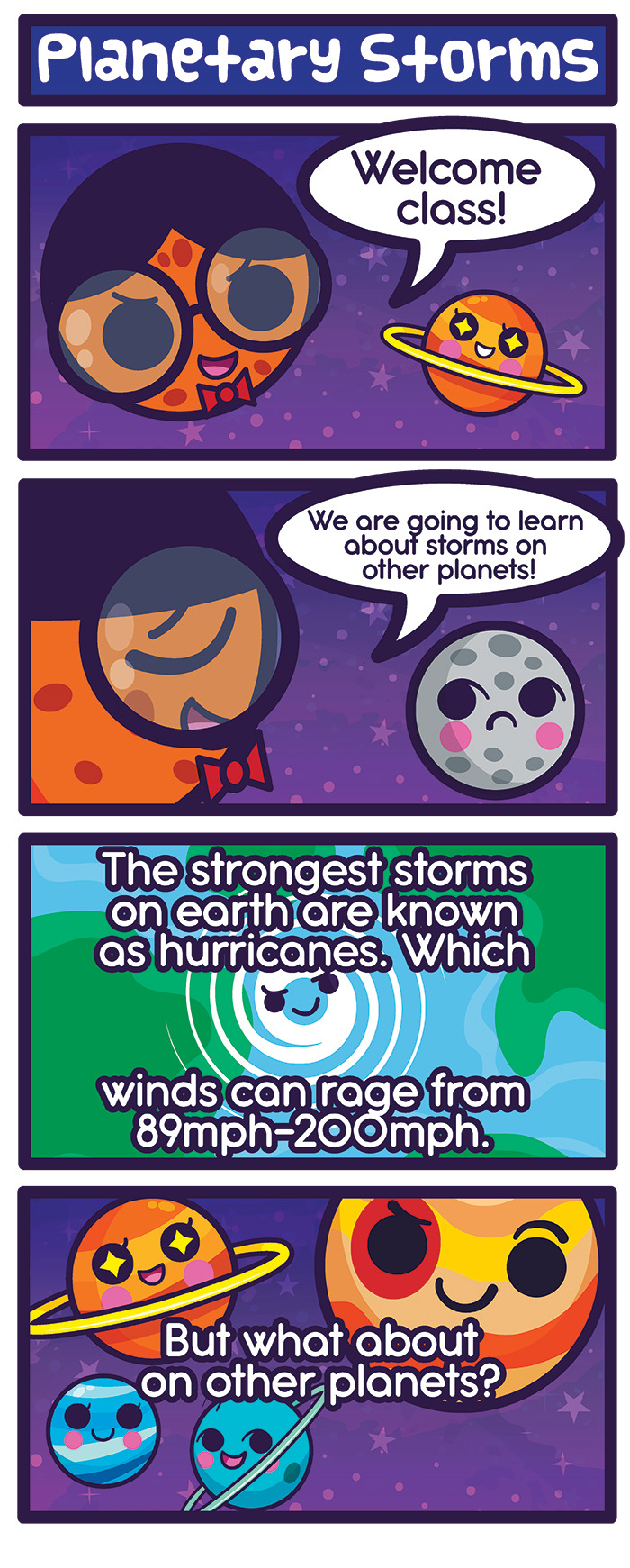
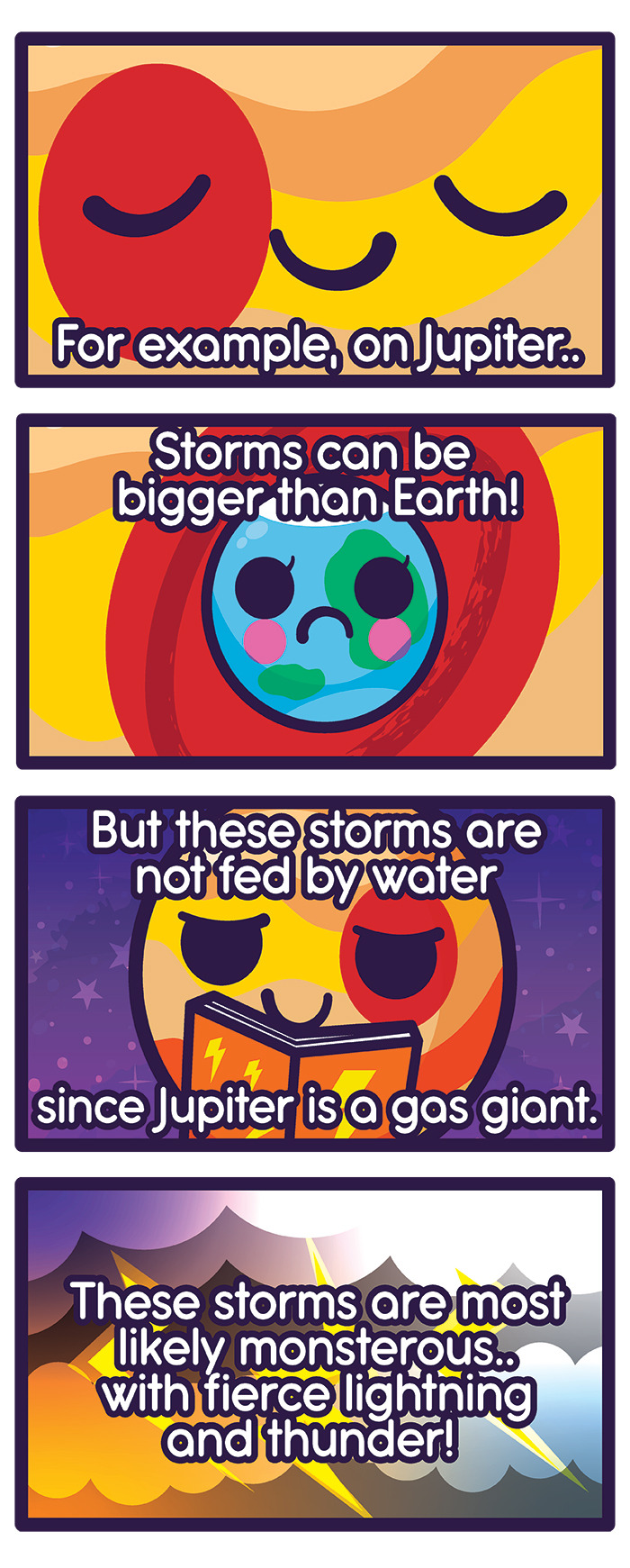

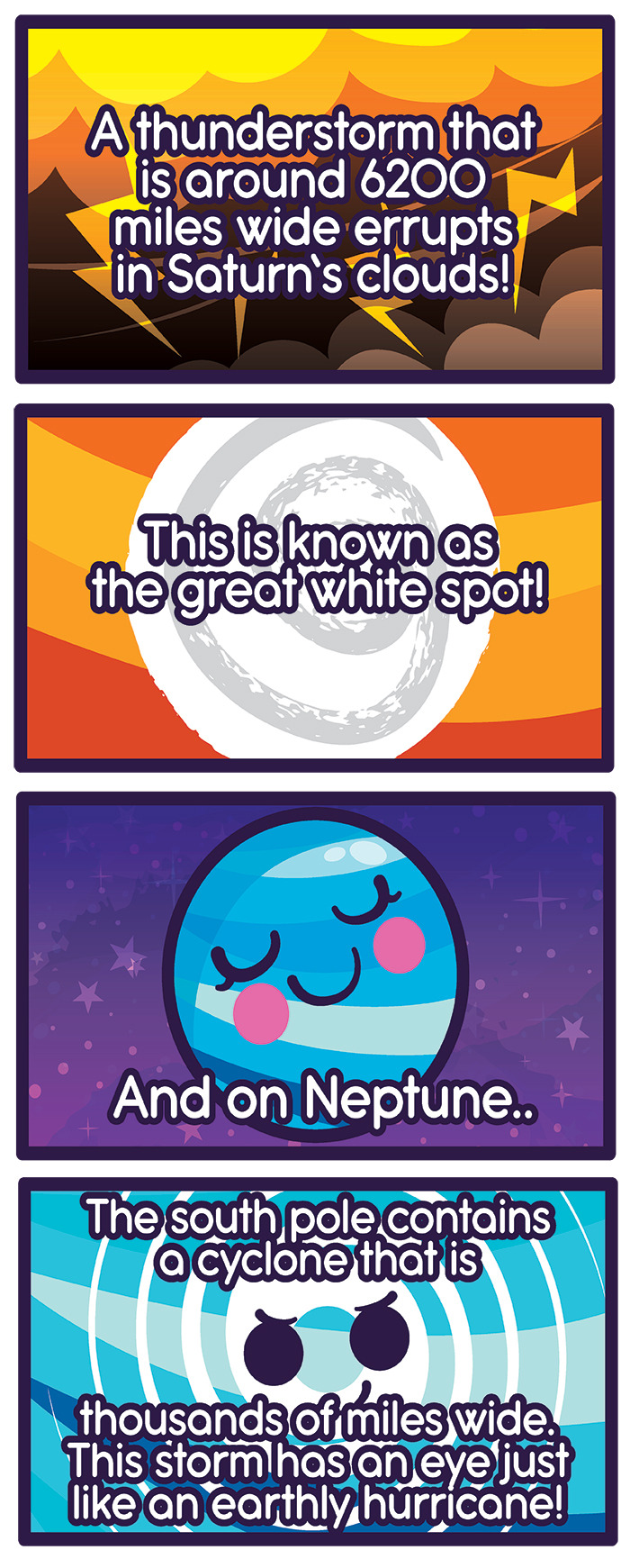


Better late than never!
Here is the final comic for starry scholastic month, making this the 4th comic of this month.
This topic is about storms on other planets.
https://www.space.com/12750-extraterrestrial-hurricanes-storms-jupiter-saturn.html
1K notes
·
View notes
Text
Review of Exometeorology and Censorship
0 notes
Photo

weather on the planets (1966, cover design by robert giusti)
695 notes
·
View notes
Link
Very cool article over at io9 about how astronomers have managed to compile the first ever weather map of a brown dwarf, aka a failed star.
#io9#brown dwarfs#astronomy#exometeorology#awesome#robert t. gonzalez#eso#luhman 16b#science#european southern observatory
0 notes
Text
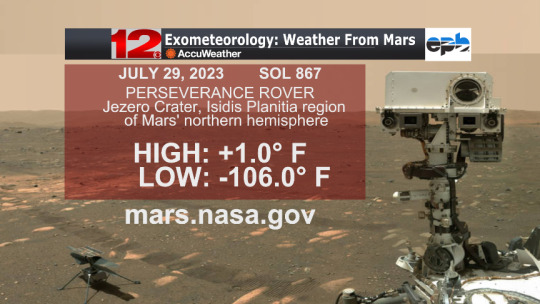
Maybe this'll cool you off a bit: Today's latest #exometeorology report from the #4thRockFromTheSun via the #PerseveranceRover in #JezeroCrater: high temperature of +1F, low of -106F.
#WDEF#WDEF-TV#WDEF.com#WDEF News 12#WDEF Weather#Chief Meteorologist Austen Onek#[email protected]#Weather on Mars#Exometeorology#Mars Weather#Perseverance Rover#Isidis Planitia#Mars Northern Hemisphere
0 notes
Photo

Astronomers Map the Extreme Weather of a Distant Hot Jupiter
An emerging branch of science known as exometeorology is offering remarkable insights into the conditions found on some of the more extreme planets in the galaxy — including the weird and mind-boggingly massive weather patterns experienced on a hot Jupiter that's 385 light years from Earth.
Hot Jupiters are those exotic class of extrasolar planets that are very similar in size and composition to Jupiter — but these massive gas giants orbit around their parent stars at ridiculously close distances. They’re located anywhere from 0.015 to 0.5 AU from their suns (1 AU = distance from Earth to the Sun).
Continue Reading
178 notes
·
View notes
Text
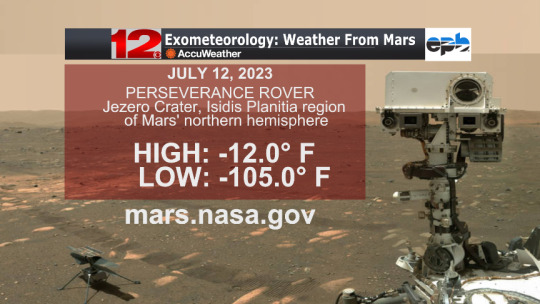
Latest weather report from Jezero Crater, Mars, courtesy Perseverance Rover. https://mars.nasa.gov/mars2020/mission/weather/
#Exometeorology#4th Rock From The Sun#Extraplanetary Weather#NASA Perseverance Rover#Weather on other planets
0 notes
Text

Vote in our #WeatherQuestion of the Day at wdef.com/votenow. Polls will be open until @WDEFNews12 #PrimeNewsAt7
#wdef#wdef-tv#chattanooga weather#wdef.com/weather#wdef chattanooga#wdef news 12#chief meteorologist austen onek#tennessee river valley#[email protected]#wdef.com#Weather Quiz#Weather Question#Weather Question Of The Day#Exometeorology Quiz#Weather On Mars#Mars Weather
0 notes
Text

Exometeorology is the study of weather on other solar system bodies (moons, planets, etc.) Latest report from the #CuriosityRover in #GaleCrater in the southern hemisphere of #Mars.
0 notes
Video
youtube
WREG-TV Weather Overtime for TUE AM 9.17.2019 https://youtu.be/glcPlMXTEc4 Continuing through the hottest time of the year in the Mid-South as cooler weather seems farther away each day. How much time is left until Autumn? Where is the next #Skywarn meeting by US National Weather Service Memphis Tennessee being held? All that and much more on WREG News Channel 3 video weatherblog Weather Overtime with meteorologist Austen Onek- WREG. #ShareAndEnjoy
#Share And Enjoy#WREG#901 Weather#Arkansas Weather#Tennessee Weather#Mississippi Weather#Mars Weather#Exometeorology#Weather Overtime#meteorologist#@AOnek_WREG3#Skywarn training#volunteer storm spotter#Autumn Countdown#video weatherblog#WREG.com/weather#WREG-TV#wreg.com#News Channel 3#Memphis Tennessee#MemphisTN
1 note
·
View note